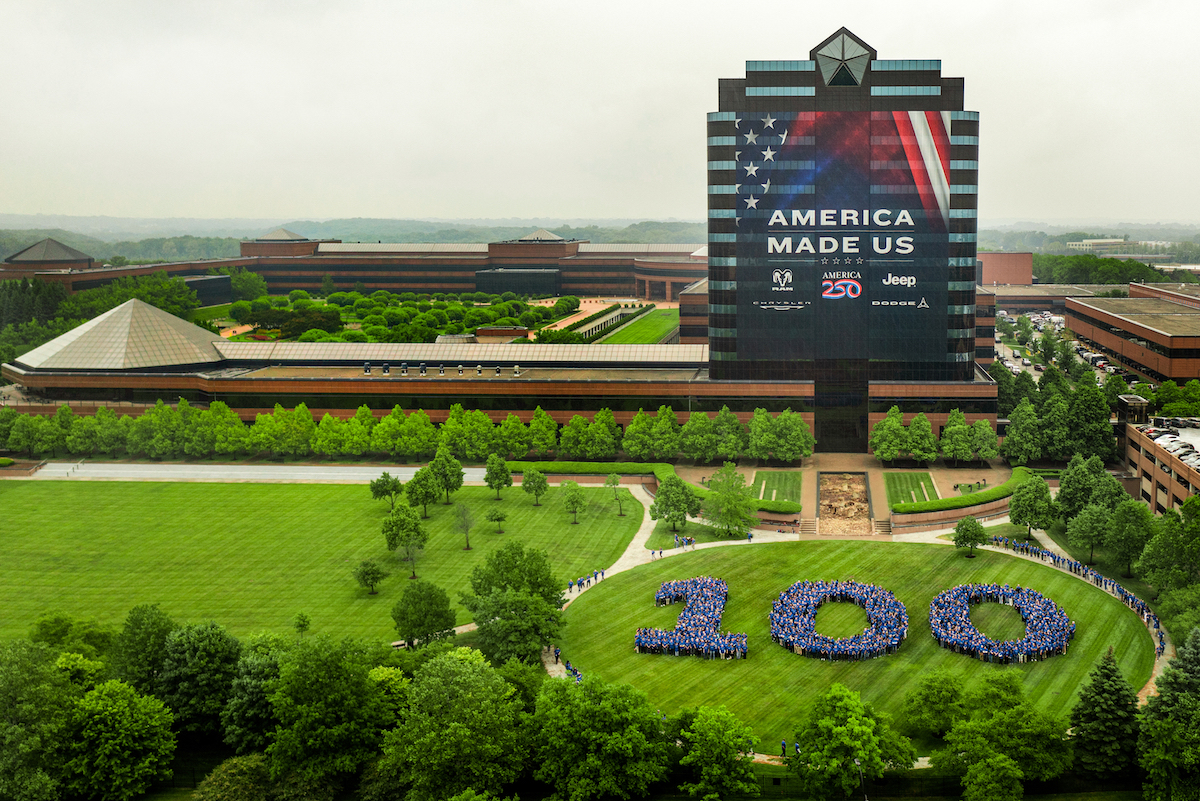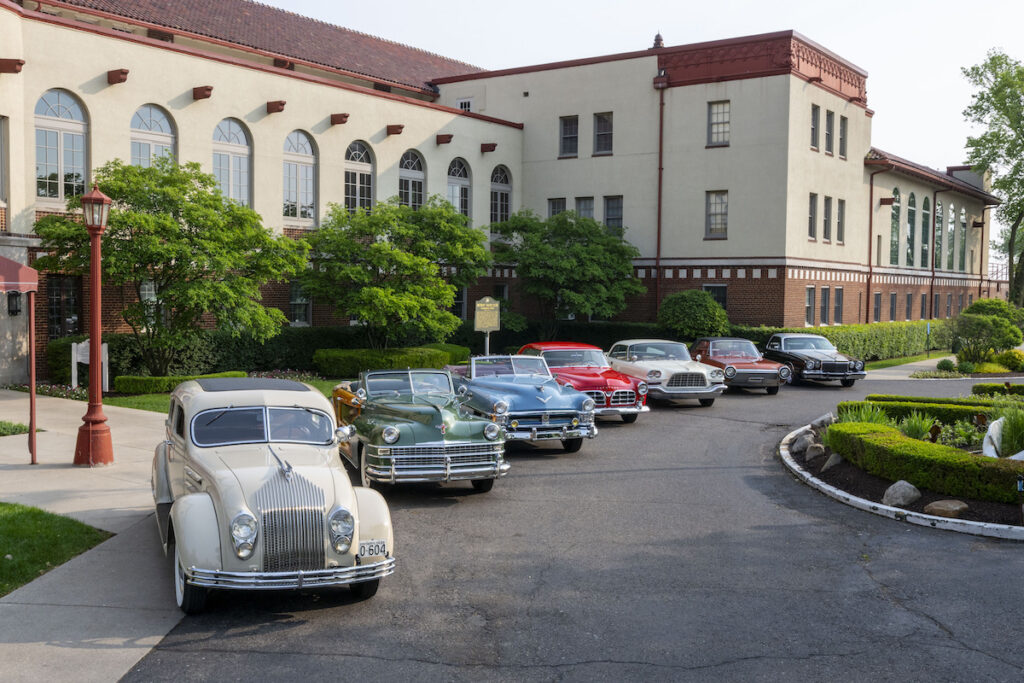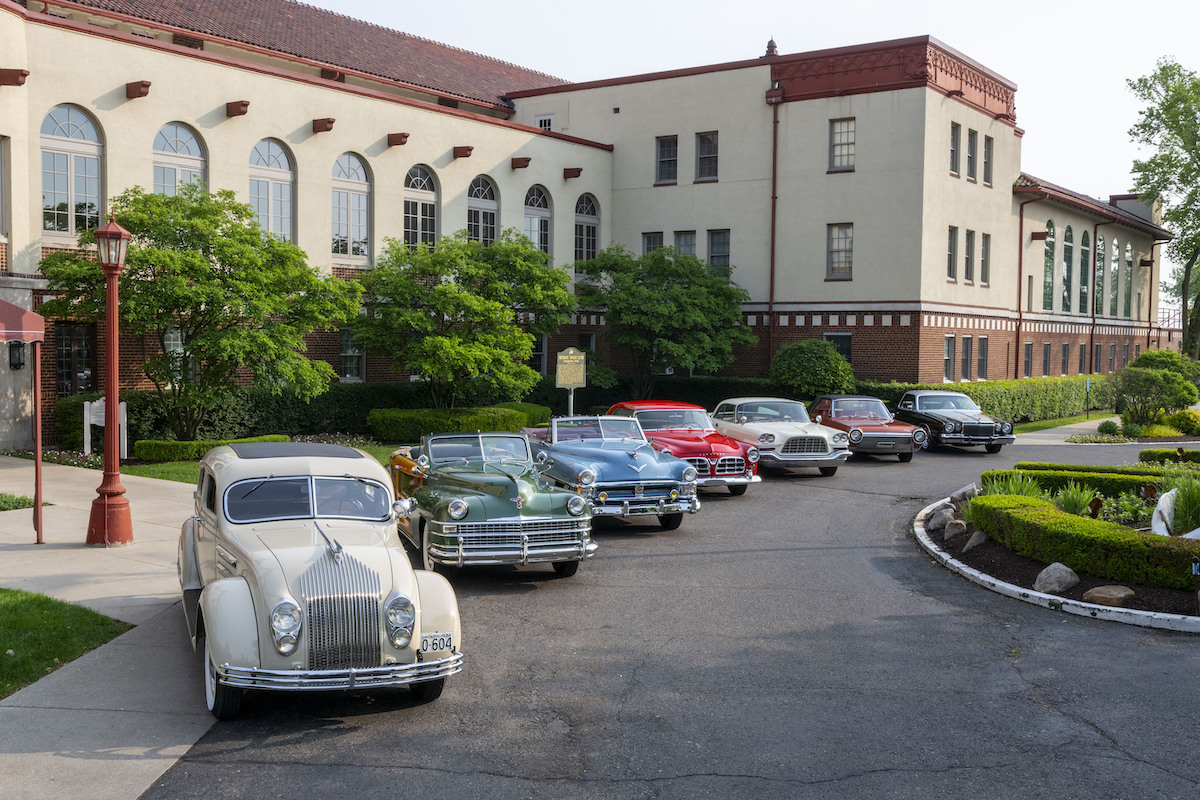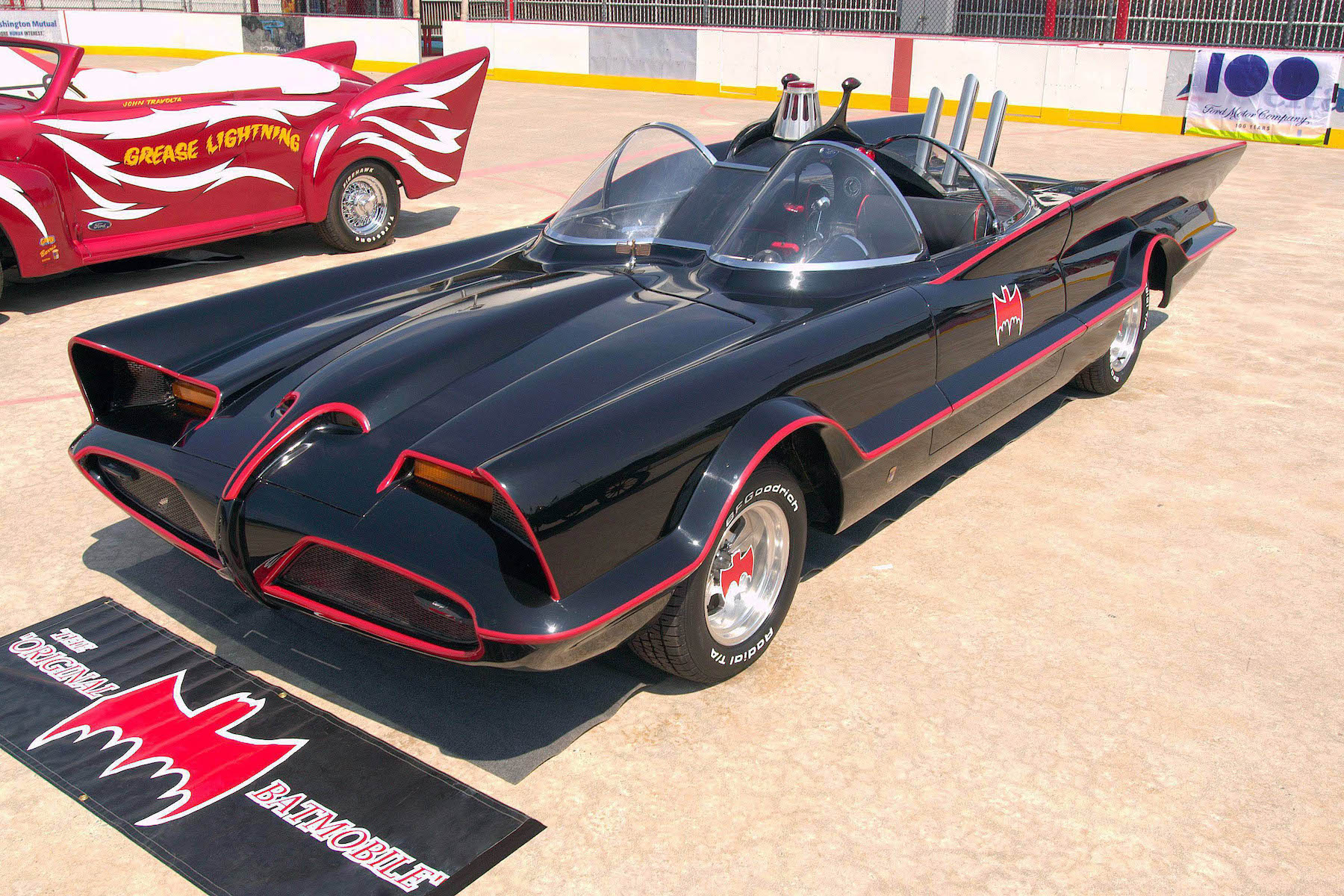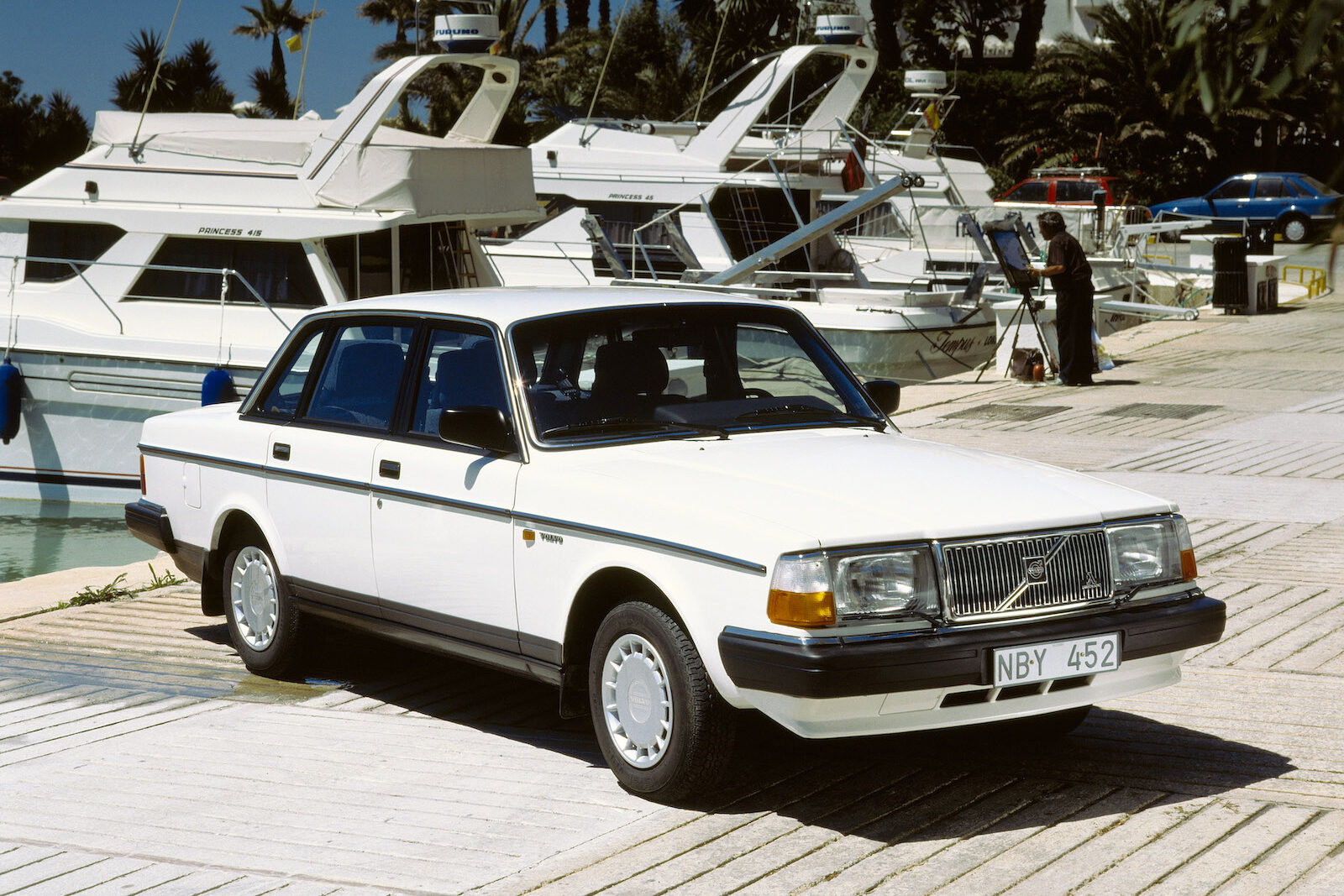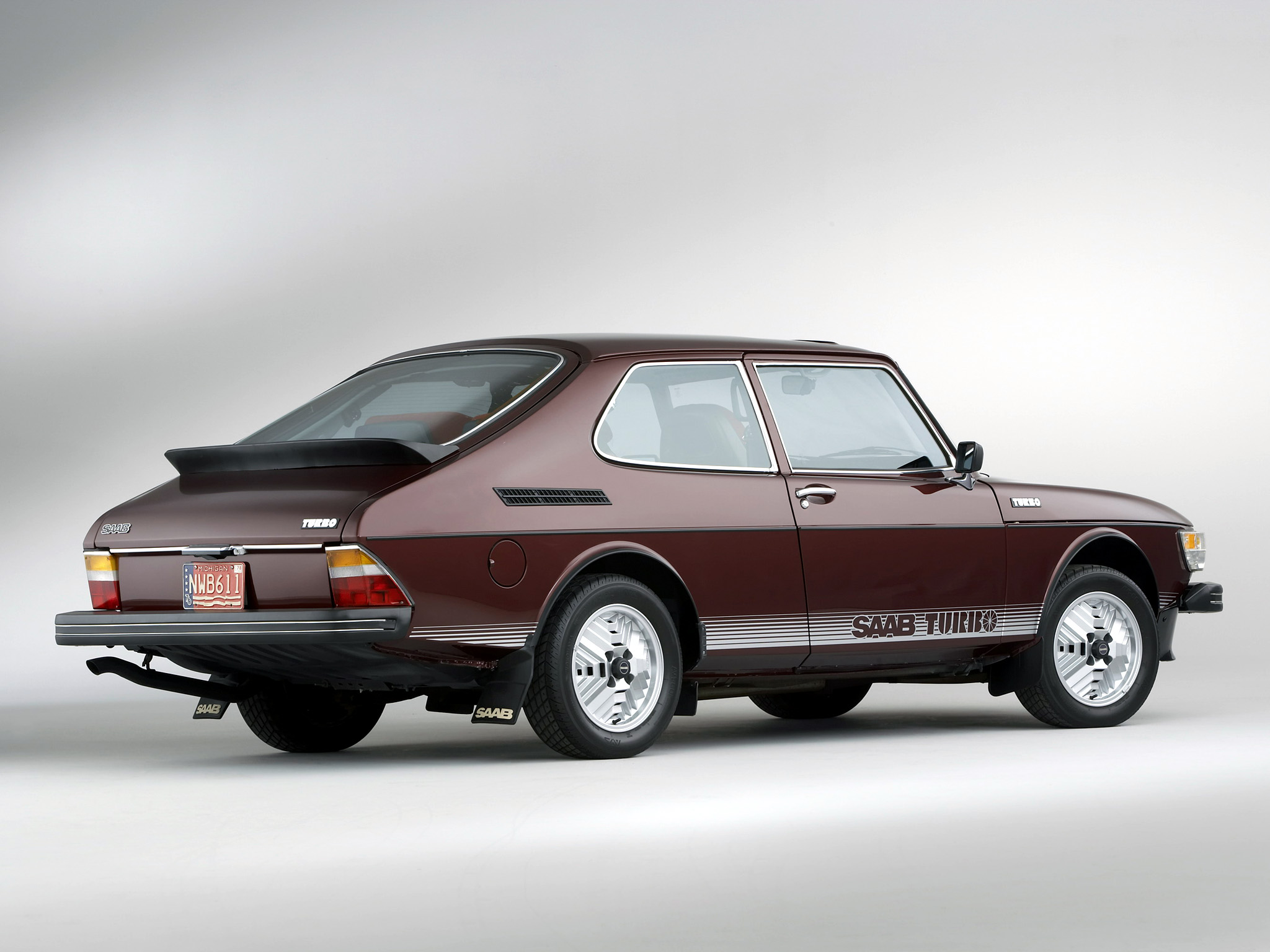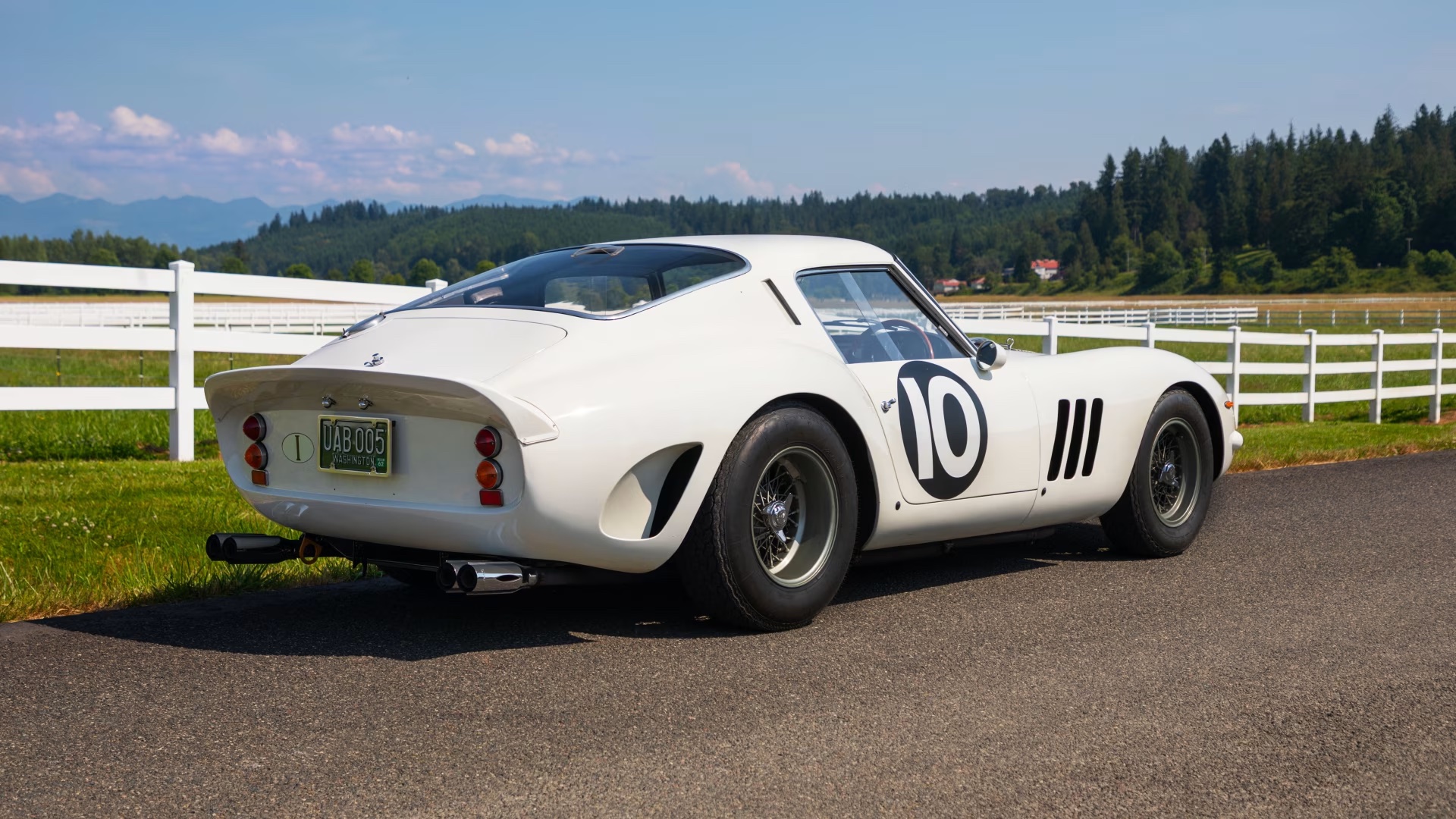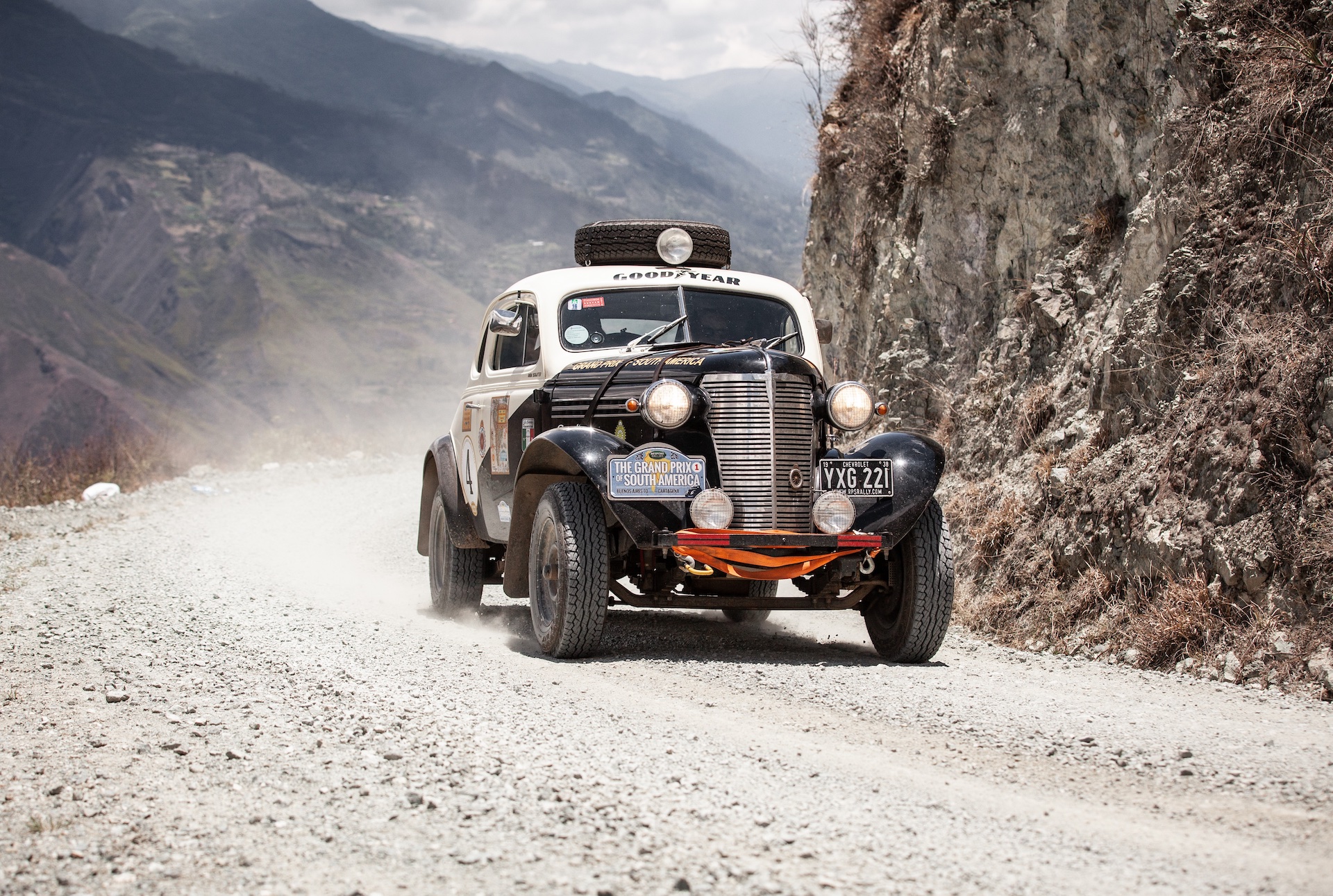On June 6, 2025, Chrysler celebrated a milestone 100 years since the production of its first-ever car, the Six. Since then, the brand has gone on to deliver some of the most innovative vehicles and automotive technology the industry as seen.
To celebrate the brand’s centenary, we wanted to take a year-by-year look back at the company’s many innovations and important historical moments – from the birth of its founder, Walter Chrysler, all the way through to the present day.
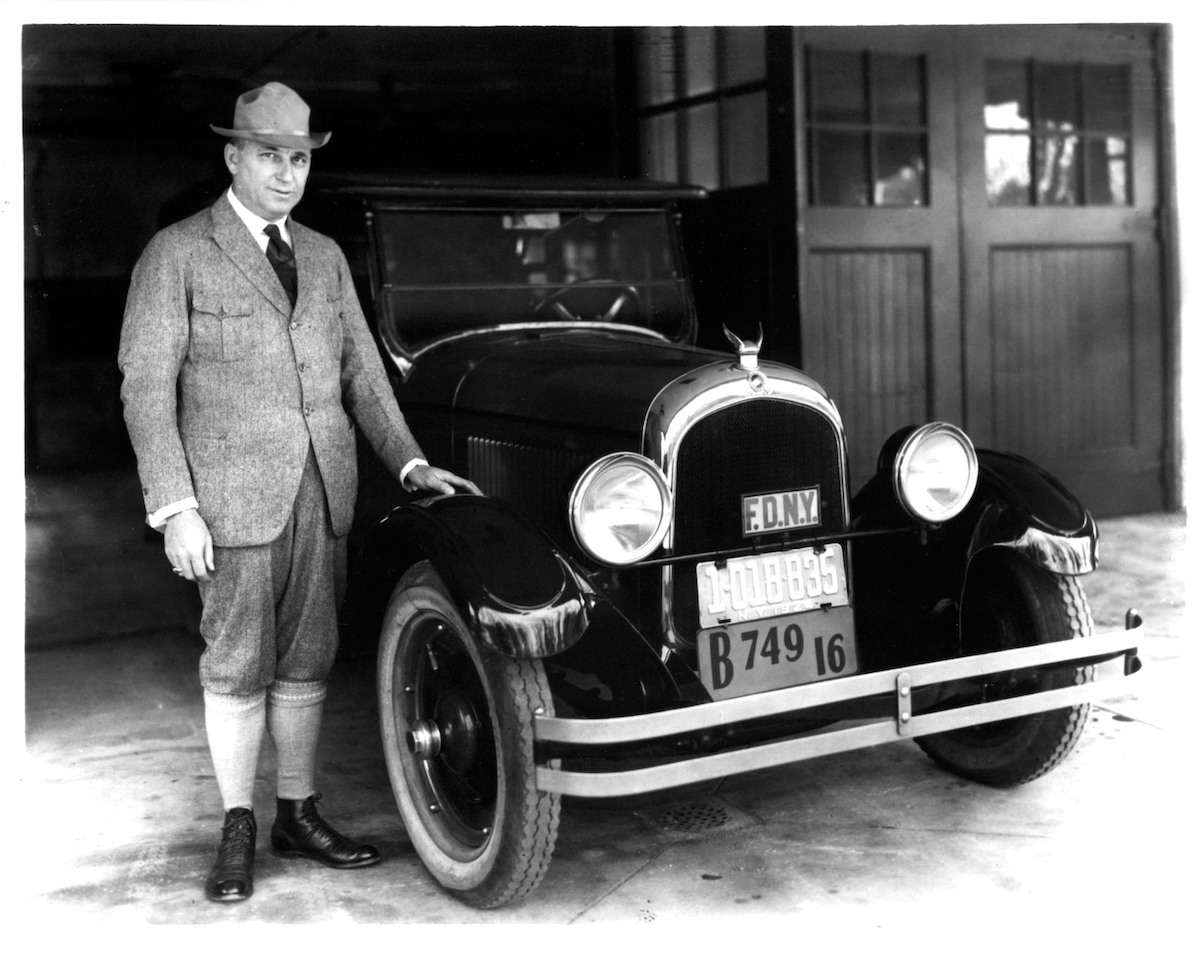
1875-1919
1875: Walter P. Chrysler is born in Wamego, Kansas, on April 2, 1875.
1892: Chrysler starts work as an ‘oil wiper’ at the Union Pacific Railroad Shops in Ellis, Kansas.
1901: Walter P. marries Della V. Forker and the union later brings four children, Thelma, Bernice, Walter Jr. and Jack.
1908: Walter Chrysler, while working for the Chicago and Great Western Railroad, buys his first car, the Locomobile Phaeton. He does not know how to drive and disassembles and reassembles the car several times to learn how it functions.
1911: A varied railroad career reaches a peak as Walter Chrysler is made works manager of the American Locomotive Company in Pittsburgh, Pennsylvania.
1912: Walter Chrysler becomes works manager for Buick Motor Company in Flint, Michigan. He takes a pay cut to be part of what he believes will be a growth industry for him. He works for Charles Nash, who later leaves GM to form his own car company.
1917: Buick names Walter Chrysler president and general manager.
1919: Walter Chrysler becomes first vice president of General Motors Corporation in charge of all manufacturing, in addition to his responsibilities with Buick.
In December, Walter Chrysler retires from General Motors at age 45.
1920s
1920: In February, Willys-Overland Company woos Chrysler out of retirement to become executive vice president of the company and he saves it from bankruptcy.
1921: Walter Chrysler also assumes control over Maxwell Motors to save it from bankruptcy.
1924: Walter Chrysler introduces his new car, the Chrysler Six, at the New York Auto Show.
1925: Maxwell Motors becomes Chrysler Corporation with Walter Chrysler as president on June 6, 1925. On June 6, the Maxwell Motor Company, whose shares are now worth $400 million, is transferred with all rights and obligations to the new Chrysler Corporation, which at the end of the year can already post a net profit of more than $4 million. Later that month, Chrysler Canada is established.
K.T. Keller, who worked with Walter P. Chrysler at Buick as head of manufacturing, joins the new Chrysler Corporation.
- Chrysler presents the new 1926 Model Four, Series 58, one of the first automobiles to use rubber mounts as part of a system to dampen engine vibrations.
- A Chrysler Six enters the Le Mans 24 Hours and reaches the finish, although it does not place.
- At the end of the year, there are 3,800 Chrysler dealers in America.
- Chrysler is the first U.S. automaker to introduce crankshaft vibration dampers.
1928: Walter Chrysler negotiates the purchase of Dodge Brothers Inc. and begins production of the DeSoto and Plymouth cars. The purchase of Dodge effectively triples the size of Chrysler Corporation.
1929: Chrysler is the first American car manufacturer to use a downdraft carburettor in a production vehicle.
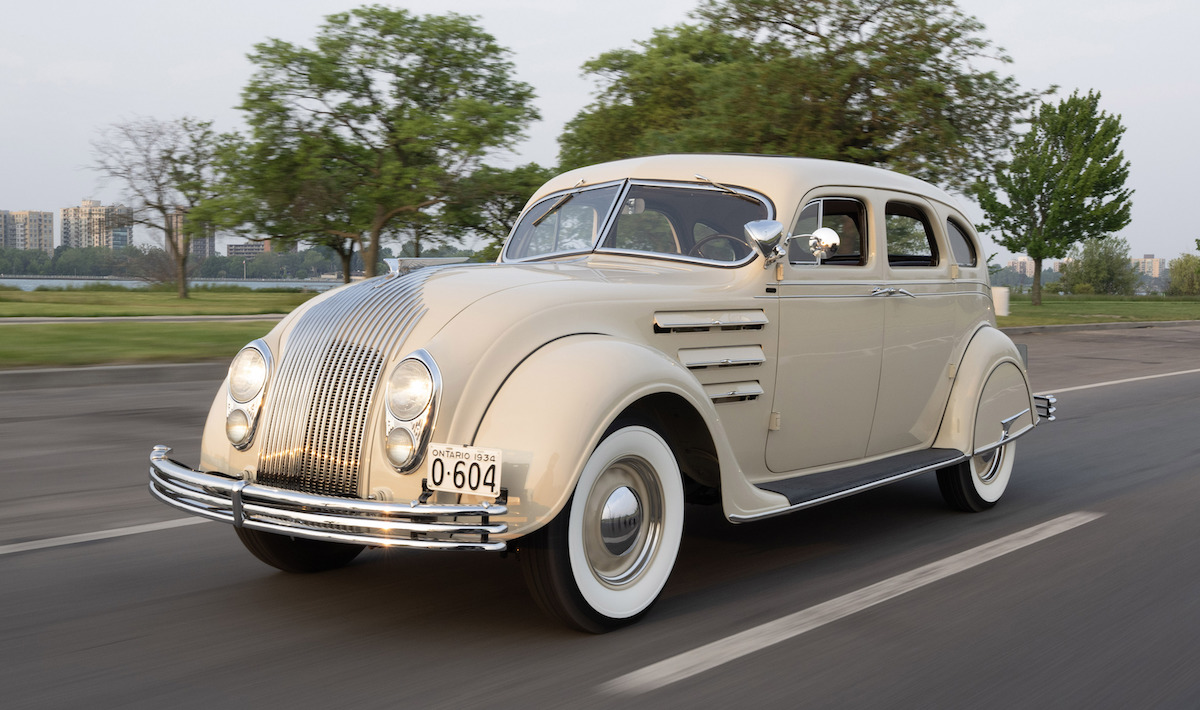
1930s
1930: Walter Chrysler builds the 77-story Chrysler building in New York City. The Chrysler building and Chrysler Corporation are separate ventures of Walter Chrysler. All Chrysler models get steel bodies and fuel pumps (replacing gravity-feed gasoline tanks).
1931: The first Chrysler eight-cylinder premiers in the Chrysler Eight and Imperial. An eight-cylinder Chrysler wins the over-three-litre category at the 24-hour SPA race in Belgium.
1932: Chrysler engineers develop ‘Oilite’, a revolutionary new kind of large-pore metal material for leaf springs and joints. Oilite can absorb 30% of its own weight in oil in its pores, release additional greasing volume under pressure and reabsorb it when the pressure declines again.
1933: Chrysler Corporation grows to become second of the Big Three automotive companies and remains in second place from 1936 to 1949. Chrysler introduces safety glass that crumbles instead of splinters.
1934: Chrysler launches the revolutionary streamlined automobiles, Chrysler Airflow and DeSoto Airflow. The Airflow Imperial is the first American car with a curved, single-part windshield. Airflow models are also offered for the first time with the optional Chrysler automatic overdrive transmission.
1935: Walter Chrysler resigns from the Chrysler Corporation presidency, but remains chairman of the board. The Airstream is introduced. This vehicle is more conventionally styled than the Airflow.
1936: A new automatic overdrive is available as an option.
1937: All Chrysler models are restyled with a rounded theme, sporting barrel-shaped grilles.
1938: The New Yorker Special is introduced. The name New Yorker will be used on all top-of-the-line Chrysler models until 1996.
1939: Chrysler presents the first semi-automatic transmissions with fluid coupling (Fluid Drive). The Chrysler line is now comprised of the New Yorker, Windsor and Saratoga series.

1940s
1940: Walter Chrysler dies on August 18, 1940. Chrysler builds its first two ‘idea cars’. These vehicles were built for both show and experimental use. The Chrysler Thunderbolt and the Chrysler Newport dual cowl phaeton. Six Thunderbolts and six Newports are constructed.
1941: Chrysler launches the Town & Country, the company’s first highly styled station wagon, with a wood and steel body and visible wood ribbing. Chrysler combines its fluid coupling transmission (Fluid Drive) with the semi-automatic ‘Vacamatic’, a four-speed transmission that automatically shifts itself between the two lower gears or between the two higher gears when the driver lifts off the accelerator pedal. The transmission still needs to be shifted with a clutch when moving between the low and high gears. A Chrysler Newport idea car paces the Indianapolis 500.
1942: Chrysler stops civilian vehicle production in favour of war production in late February.
1942-45: At Chrysler’s Jefferson Avenue Plant in Detroit, Chrysler builds 10 different defence-related products using its six-cylinder passenger car engine. These items include marine engines, air raid sirens, fire-fighting equipment and smoke-screen apparatus. The Highland Park Plant produces almost 330,000 rockets for the military.
1946: Chrysler resumes vehicle production, producing slightly modified prewar models. There are new sedan, coupe and convertible versions of the Chrysler Town & Country.
1947: The new Travel long-wheelbase sedan makes its debut. This stylish new model sports a factory roof rack and is favoured by the travel industry.
1948: Town & Country models now wear Di-Noc decals rather than genuine mahogany veneer.
1949: The first all-new Chrysler models since the war are presented.
- Chrysler invests $90 million in new tools and equipment.
- Chrysler introduces padded dashboards for safety reasons.
- Chrysler is the first American automaker to use combined ignition-starter locks.
- Famed car designer Virgil Exner departs Studebaker and joins Chrysler.
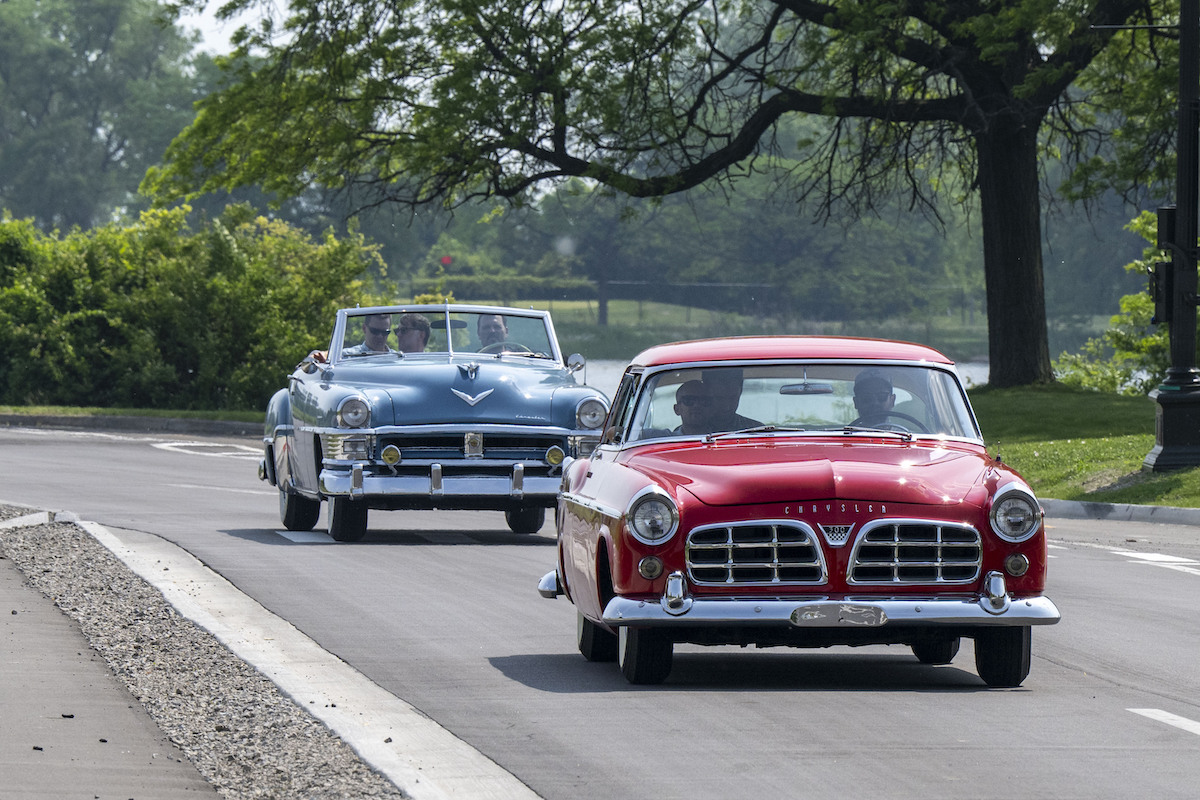
1950s
1950: Chrysler introduces four-wheel self-energizing hydraulic disc brakes and becomes the first American manufacturer to offer electric windows.
1951: Chrysler engineers design the famous HEMI V8 engine with hemispherical combustion chambers, which establishes American high-performance standards in the ’50s and ’60s. The HEMI, which takes six years to develop, is Chrysler’s first V8 engine. With 180hp, it is immediately recognised as the peak of American automotive achievement.
- Chrysler offers Hydraglide full-time power steering.
- Briggs Cunningham purchases Chrysler HEMI engines for use in his C-2 race cars, designed to race at LeMans. One of three cars finishes in 18th place.
- The Town & Country once again becomes a wagon, minus the wood sides.
- The Chrysler New Yorker paces the Indianapolis 500 race.
1952: The Chrysler C-200 concept car is unveiled.
1953: The innovative PowerFlite two-gear automatic transmission premieres at Chrysler. The first widely available automotive air conditioner is offered in the 1953 Chrysler New Yorker.
1954: Chrysler opens its test track in Chelsea, Michigan, near Ann Arbor.
- Chrysler test drivers set a new American 24-hour speed record of an average of 118.18 mph (just under 190 km/h) for 2,836 miles.
- Chrysler begins testing a revolutionary gas turbine engine.
- Lee Petty drives a HEMI-powered Chrysler to seven wins and an additional 17 top-five finishes in NASCAR racing.
1955: Chrysler debuts the ‘forward look’ styling of Virgil Exner.
- Chrysler ushers in the performance car era with the introduction of the C-300, the first in a long line of Chrysler ‘letter series’ cars.
- A Chrysler C-300 wins a NASCAR Grand National race for the first time with an average speed of 92mph (just under 150km/h).
- Carl Kiekaefer, of Mercury Outboard Marine Company, forms a racing team using Chrysler C-300 HEMI-powered cars. The team wins an amazing 20 out of 40 NASCAR races.
- Chrysler introduces fully transistorised radios in passenger cars.
1956: Chrysler introduces a push-button fully automatic transmission, Magic Touch. A Highway Hi-Fi record player is offered as an option.
1957: Chrysler offers a newly designed automatic transmission as series standard, the legendary TorqueFlite. The Chrysler product range comprises four model lines: Windsor, Saratoga, New Yorker and 300C.
1958: Chrysler introduces automatic speed control, an industry first.
1959: Chrysler introduces cruise control and power locks as options.

1960s
1960: Chrysler becomes the first American automaker to offer a car record player for 45rpm discs, with a capacity of 19 small records.
1961: This is the last year for fins on Chrysler models.
1962: Production begins on 55 turbine-powered cars.
1963: Chrysler introduces a new guarantee: five years or 50,000 miles on the drivetrain.
- A Chrysler 300 convertible paces the Indianapolis 500.
- Chrysler Turbine cars are loaned to 200 families throughout the country for real world evaluation.
- Chrysler begins a 30-year partnership with the PGA by being the primary sponsor.
1964: The Walter P. Chrysler Freeway opens in Detroit. Tools from Chrysler’s original toolbox are used to cut the ribbon.
1965: The Chrysler 300L is the final Letter Series model.
1966: Sales soar for the non-letter 300 series. The 300X show car with lever-operated steering is introduced.
1967: Innovations include a reversable front seatback on the passenger side and a combination front centre armrest and writing table.
1968: Chrysler models receive a light makeover with new grilles.
1969: The all-new ‘fuselage-styled’ Chrysler vehicles are available.

1970s
1970: A Hurst Performance Chrysler 300H is introduced.
1971: Chrysler introduces a brake-slip control system, Four-Wheel Sure-Brake, optional on the Imperial model.
1972: A new solid state ignition system is offered on all Chrysler models.
1973: The entire Chrysler line is redesigned and grows in length.
1974: For the third year in a row, the Chrysler line is completely redesigned.
1975: The new Cordoba personal-luxury coupe is introduced and is the smallest post-war Chrysler ever.
1976: An electric Lean Burn System is fitted to Chrysler’s V8 engines for cleaner exhaust.
1977: The luxury midsize LeBaron is introduced. The new model is available in two- and four-door versions.
1978: A station wagon is added to the LeBaron lineup. The Town & Country features faux woodgrain like the Town & Country models of the early 1940s.
1979: Chrysler offers a 300 based on the Cordoba. The vehicle features a cross-bar grill with a 300 emblem in the centre.
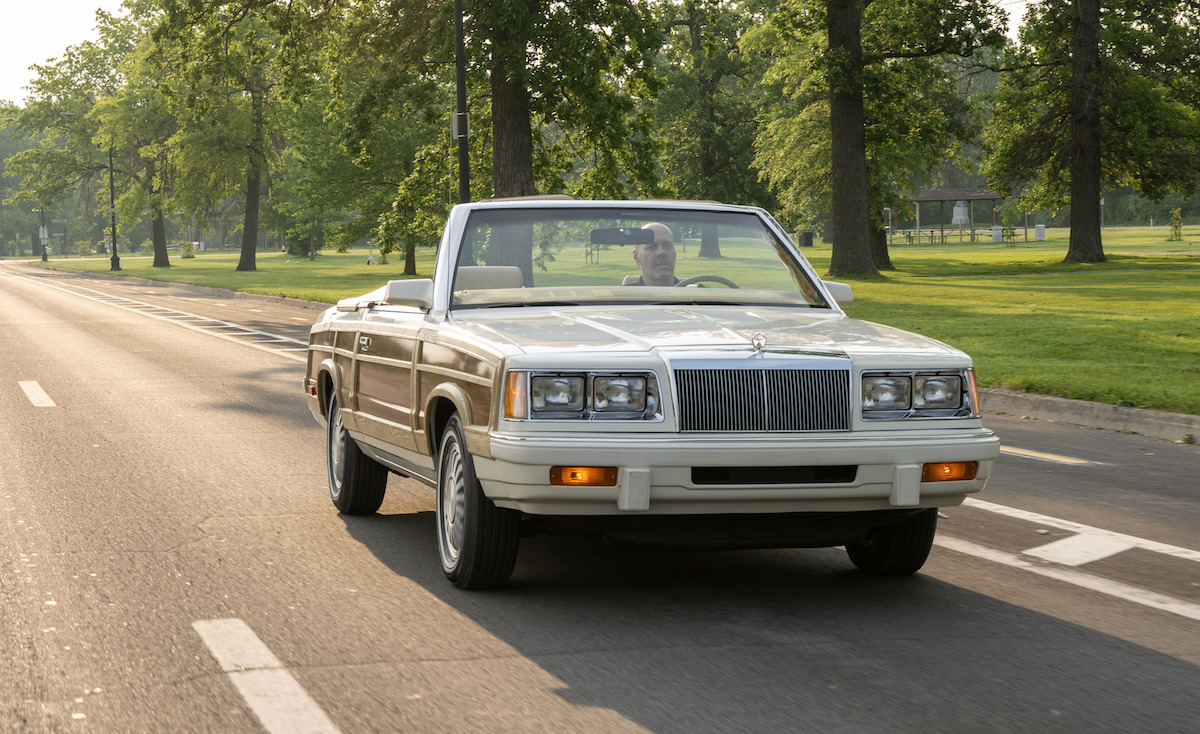
1980s
1980: The second-generation Cordoba is introduced.
1981: The Imperial name is revived. This new version’s wheelbase is nearly a foot shorter than previous Imperials.
1982: The front-wheel drive LeBaron is introduced, based on the K-Car platform and significantly smaller than its predecessor and is. A LeBaron convertible is also offered, becoming the first convertible in the North America automotive market since 1976.
1983: The Chrysler E-Class is introduced. Based on the K platform, this vehicle has a longer wheelbase than any other vehicle on the platform.
- The first Chrysler minivan rolls off the line at Windsor Assembly Plant on November 2, 1983, as a 1984 model, the first of more than 15 million minivans sold by the company to date. Stellantis minivans are the first mass-produced vehicles with modern cupholders
1984: The front-wheel-drive Chrysler Laser sport coupe is introduced. The rear-wheel-drive Fifth Avenue replaces the New Yorker, which has switched to front-wheel drive. The Chrysler Executive Sedan and Limousine are introduced.
1985: A stretched K platform LeBaron GTS is released. Aimed at performance enthusiasts it features a turbocharged 2.2-litre engine, firmer suspension and gas-pressurised struts/shocks.
1986: Chrysler introduces the seven-year/70,000-mile warranty for the drivetrain of Chrysler automobiles and a seven-year/100,000-mile warranty against corrosion. A new 2.5-litre four-cylinder engine using counter balanced shafts is introduced.
1987: Chrysler Corporation acquires American Motors Corporation (AMC), which includes the Jeep brand.
- After a nine-year interruption, Chrysler resumes exports to Europe with the Chrysler LeBaron Convertible, Chrysler Voyager and Chrysler Daytona models.
- The Portofino Concept is unveiled. Designed by an international design team that includes Lamborghini employees, the vehicle features doors that pivot upward and no B pillar. This vehicle inspires the ‘cab-forward’ design featured on production cars in the 1990s.
1988: A redesigned New Yorker is now available with a new 3.0-litre V6.
1989: Chrysler becomes the first American automaker to offer airbags as standard equipment. The last rear-wheel-drive Fifth Avenue is produced. All Chrysler products are now front-wheel drive.
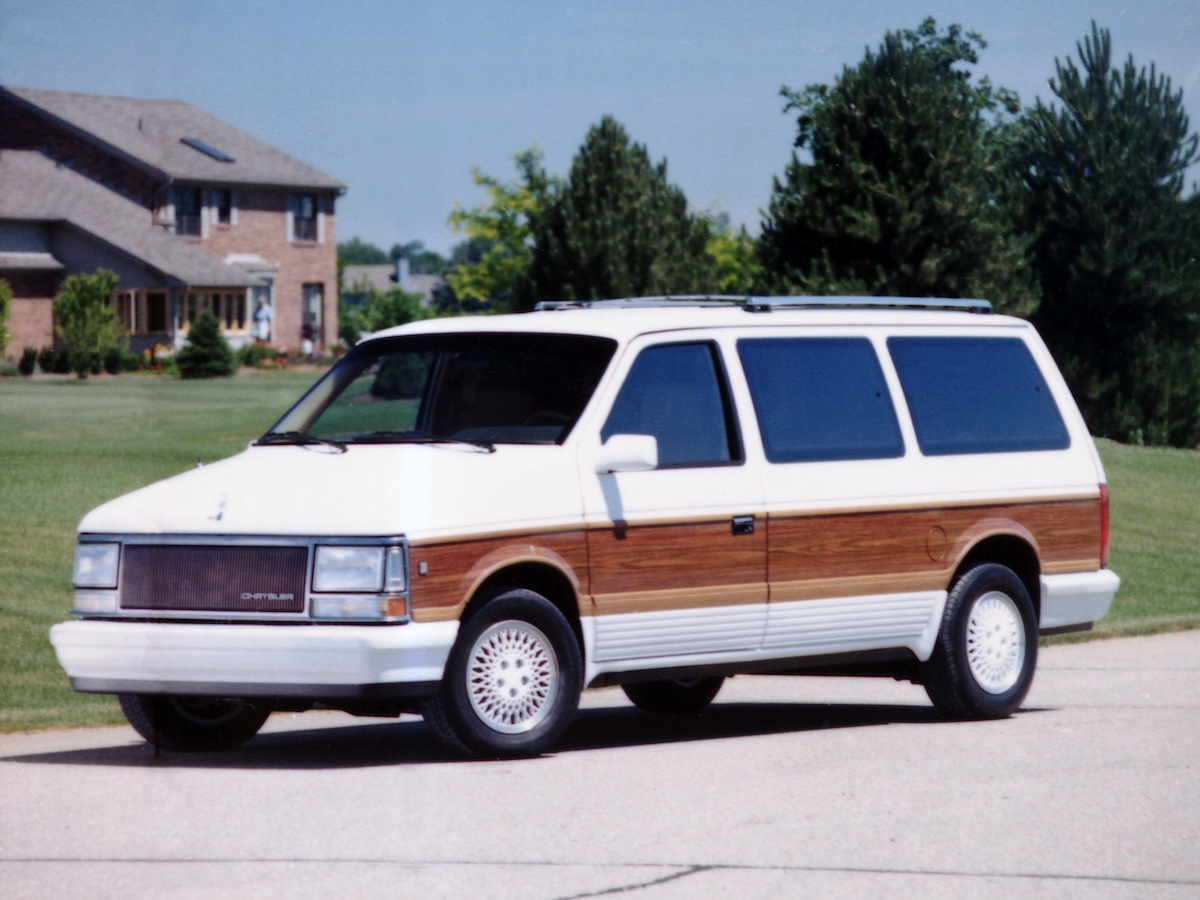
1990s
1990: Town & Country once again becomes a standalone nameplate as Chrysler introduces the first luxury minivan. A driver’s side airbags become standard equipment.
1991: Chrysler begins the process of moving its corporate headquarters from its 1925 founding location in Highland Park, Michigan, to nearby Auburn Hills. The move is complete by 1993. The Town & Country is redesigned and now offers standard drivers-side airbags.
1992: Anti-lock brakes are a new and popular item.
1993: Chrysler introduces a new line of family cars built on the new LH platform, with an innovative and ergonomically favourable cab-forward design, the Chrysler Concorde. The LH cars feature longitudinally mounted V6 engines with a front-wheel-drive drivetrain.
1994: Introduced in May 1993 for the 1994 model year, the Chrysler LHS is the top-of-the- line model for the division, as well as the most expensive of the Chrysler LH platform cars.
1995: The four-door notchback midsize Chrysler Cirrus sedan is introduced, based on the JA platform.
- The first-generation Sebring coupe is introduced, built on a Mitsubishi Motors platform shared by the Eagle Talon, Mitsubishi Eclipse, Mitsubishi Galant, and Dodge Avenger.
- Chrysler’s hybrid-electric car, the Patriot, wins the Discover Award for technological innovation.
- The Chrysler Atlantic, a retro concept car created by Chrysler and fabricated by Gaffoglio Family Metalcrafters in California, makes its debut. The Atlantic is designed by Bob Hubbach and inspired by the Bugatti Atlantique. The idea for the car begins as a sketch on a napkin by Chrysler’s president Bob Lutz and involves the automaker’s chief designer, Tom Gale.
1996: A new Sebring convertible replaces the LeBaron ragtop.
1997: The Phaeton four-door hardtop concept is revealed, drawing much of its inspiration from the 1941 Chrysler Newport.
1998: Chrysler and Mercedes-Benz form DaimlerChrysler.
- Chrysler introduces the 1999 Chrysler LHS and Chrysler 300M sedans.
- The 300M continues the legacy of the famous ‘letter series’ cars made from 1955 to 1965.
- The Chronos concept is introduced, powered by a Viper V10 engine and inspired by the timeless 1950 designs of Virgil Exner.
1999: The 300 nameplate returns to the Chrysler brand with the introduction of the 300M, a full-size luxury car based on the LH platform.
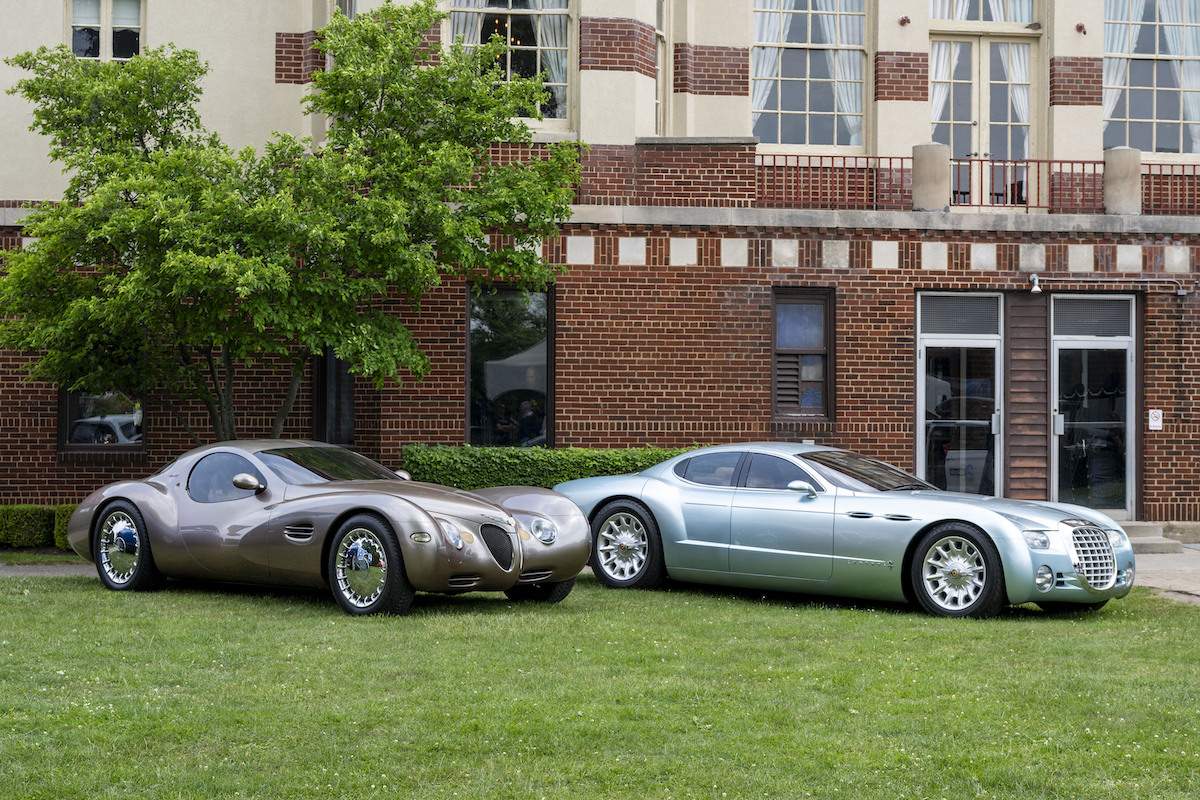
2000s
2000: Chrysler reveals the Chrysler 300 HEMI C concept vehicle at the North American International Auto Show.
2001: Chrysler introduces the power sliding door obstacle system for opening and closing the doors on the minivan.
- Chrysler introduces the Crossfire concept car and the PT Cruiser, with the latter inspired by designs from the ’30s and ’40s. The Retro-styled PT Cruiser is available at launch as a five-door hatchback with modern, highly functional interior with a high roof and flexible cargo area.
- Chrysler introduces the new Sebring sedan, which is built on the JR platform.
2002: With the end of the Plymouth brand the previous year, the Prowler is now sold as a Chrysler for one year. The Chrysler Pacifica three-row crossover is introduced at the 2002 New York International Auto Show for the 2003 model year, making this one of the first crossover vehicles in the U.S. market.
2003: The Chrysler Airflite concept is introduced at the 2003 Geneva Auto Show, featuring stylish looks and sporty design cues borrowed from the Chrysler Crossfire.
2004: Chrysler exhibits its engineering and design prowess with the release of the Chrysler ME-412 concept vehicle at the North American International Auto Show.
- The introduction of the 2005 Chrysler 300 marks the return of the great American sedan.
- The Chrysler 300 is named Car of the Year by Motor Trend Magazine.
- The rear-wheel-drive 2005 Chrysler 300C and Dodge Magnum R/T become the first modern volume-production vehicles produced in North America to feature the 5.7-litre HEMI engine with cylinder deactivation.
- Chrysler Crossfire rear-wheel-drive, two-seat sports coupé and roadster, based on a Mercedes SLK Platform, are introduced.
- Chrysler brand’s groundbreaking Stow ‘n Go seating and storage system debuts for 2005 model-year Chrysler minivans.
2005: Chrysler 300 is named North American Car of the Year. Chrysler launches a two-door convertible version of the popular PT Cruiser. The Firepower grand tourer concept car makes its debut at the 2005 North American International Auto Show, exuding Chrysler brand attributes of elegance and performance.
2006: The Chrysler 300C earns a spot on Car and Driver’s 10 Best Cars list for both 2005 and 2006.
2007: Chrysler unveils the all-new 2008 Chrysler Town & Country minivan at the North American International Auto Show, featuring a new design language and styling cues from the 2003 Chrysler Airflite concept.
- Chrysler introduces the Sebring sedan on the new JS platform.
- The Chrysler Aspen, the first truck-based SUV commercialized under the Chrysler brand, is launched.
2008: Chrysler releases the Sebring Convertible at the Los Angeles Auto Show, with both a soft-top and a retractable hardtop.
2008: Chrysler launches its first hybrids, the Chrysler Aspen and Dodge Durango, both delivering a 25% overall improvement in fuel economy without sacrificing performance or towing capabilities.
2009: The Chrysler 200C concept is introduced at the North American International Auto Show in Detroit.
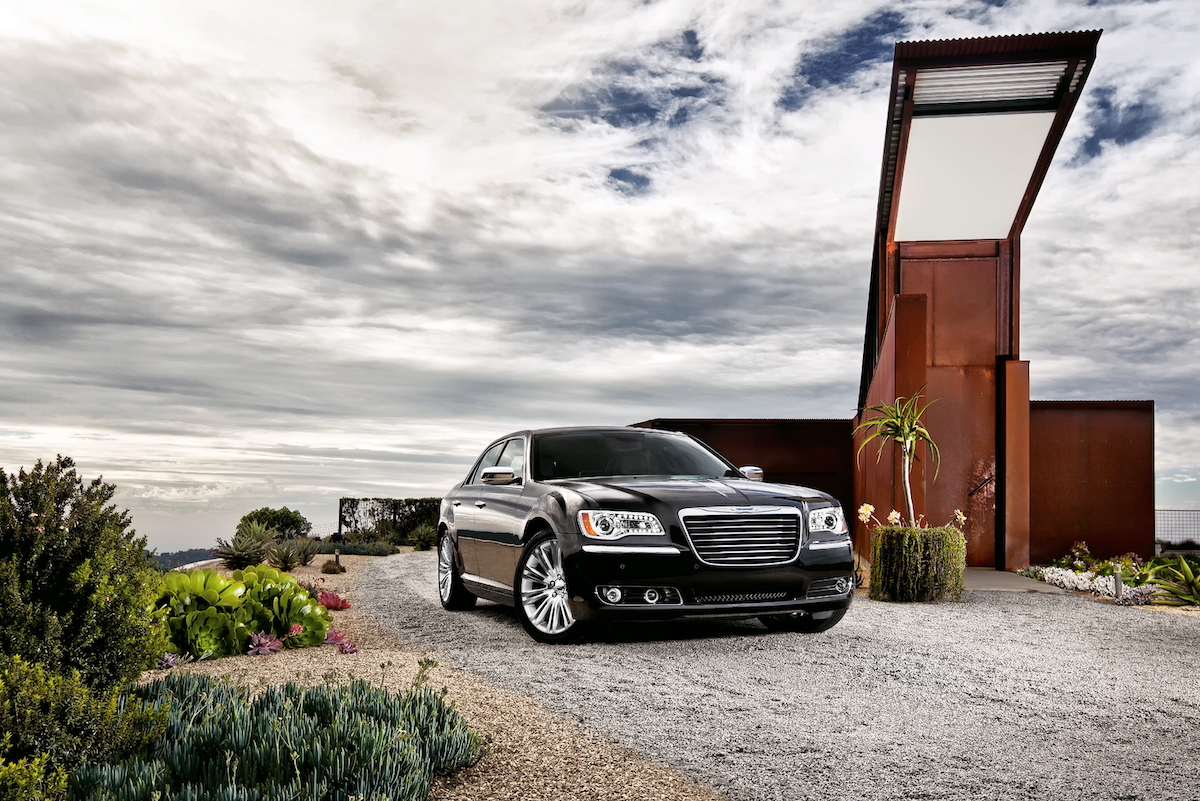
2010-2025
2010: Chrysler ends production of the PT Cruiser.
2011: The Chrysler 200 is introduced to replace the Chrysler Sebring. The midsize vehicle is available as a four-door or two-door convertible and features in a two-minute Super Bowl ad featuring rapper Eminem.
- The Chrysler 300 SRT, powered by a 6.4-litre HEMI V8, is introduced at the New York International Auto Show.
2012: Chrysler celebrates Mopar’s 75th anniversary with the Chrysler 300 Mopar 12, featuring thin Mopar Blue stripes, black 20-inch forged aluminium wheels, black grille and front fascia inserts, black-trimmed headlights and Mopar 75 badges.
2013: Chrysler celebrates 30 years of the minivan segment it invented. Since introducing the segment in 1983, Chrysler minivans had sold 13.5 million units up to that point, dominating minivan sales.
2014: In October, Fiat SpA and Chrysler Group LLC merge to form Fiat Chrysler Automobiles N.V. (FCA).
- Chrysler brand debuts the all-new-from-the-ground-up Chrysler 200 midsize sedan as a 2015 model-year vehicle, the first midsize sedan to offer a nine-speed automatic transmission as standard equipment.
2015: Chrysler marks the 90th anniversary of the company’s founding.
2016: Chrysler introduces the next-gen evolution of its minivan lineup with the Chrysler Pacifica and Pacifica Hybrid at the 2016 North American International Auto Show in Detroit.
2017: Chrysler introduces the Chrysler Portal concept, leveraging ideas from millennials working inside the company’s design and engineering functions to collaborate on ideas about the future of family transportation.
- Chrysler Pacifica is named the 2017 North American Utility Vehicle of the Year.
2018: Thousands of Chrysler Pacifica Hybrid minivans are used by Waymo to support the launch of the world’s first driverless ride-hailing service.
2019: Chrysler celebrates 15 million minivans sold since the very first minivan rolled off the line at the Windsor Assembly Plant on November 2, 1983.
2020: Chrysler unveils refreshed Chrysler Pacifica, with all-wheel-drive capability and a new FamCAM interior camera that provides a view of rear-facing child seat occupants.
2021: FCA and PSA merge to create Stellantis, a company with 14 brands, including Chrysler, with a focus on global innovation and efficiency.
2022: Chrysler Airflow concept is unveiled at CES 2022, giving a glimpse at potential fully connected customer experiences and advanced mobility features.
2023: The 100,000th Chrysler Pacifica Plug-In Hybrid rolls off the production line at the Windsor Assembly Plant.
2024: Chrysler unveils the fully electrified Chrysler Halcyon concept, featuring fully autonomous driving capability and other futuristic technology.
2025: Chrysler marks its 100th anniversary, honouring Walter P. Chrysler’s legacy of innovation, engineering excellence and beautiful, affordable designs.
